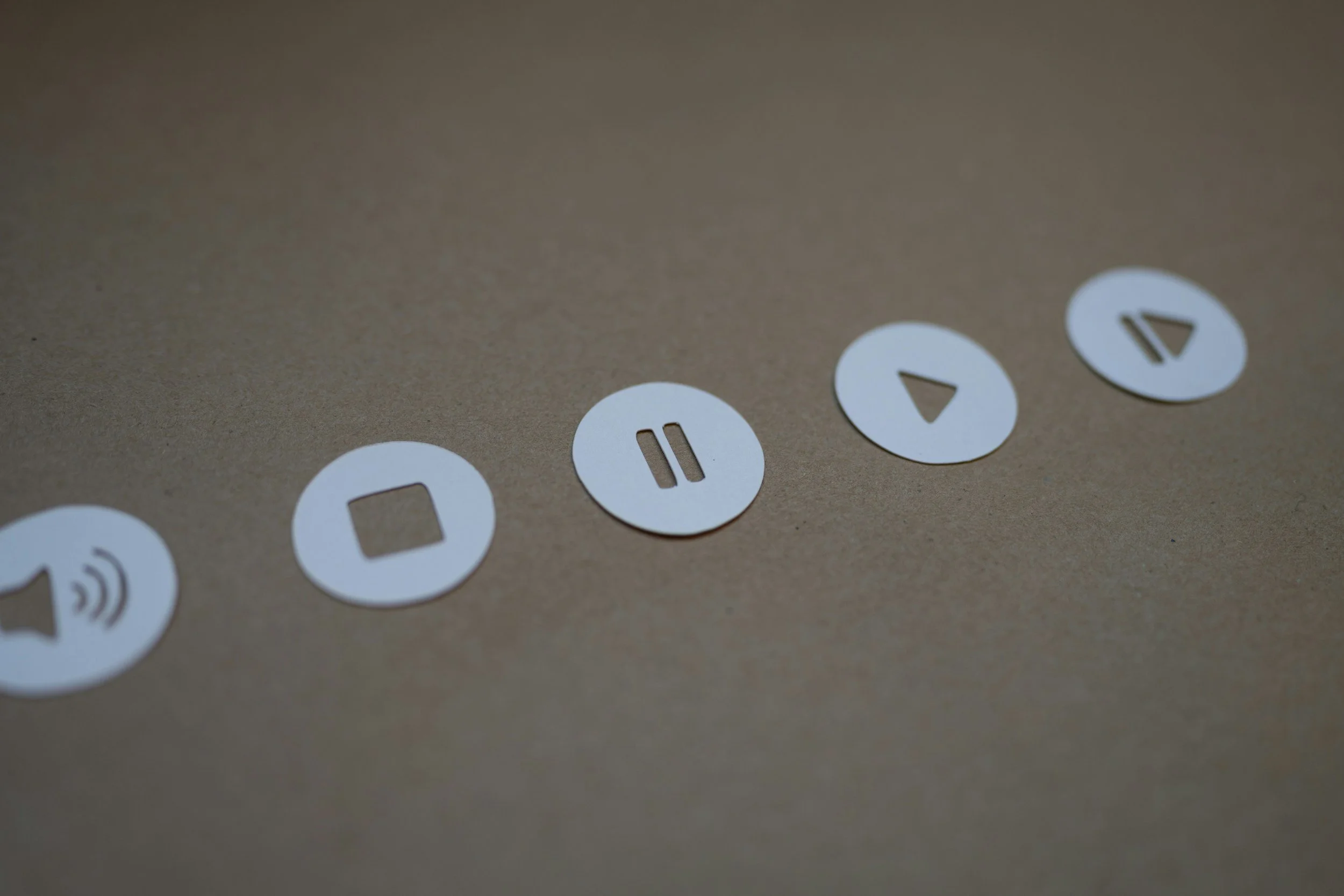Master Pauses, Pacing, and Timing in Public Speaking to Deliver Powerful Presentations

Liam Sandford
Liam Sandford is a public speaking coach, marketing leader, and 2x Best Selling Author, including the book Effortless Public Speaking. He helps introverted professionals and leaders take control of public speaking anxiety and use speaking to market themselves, build influence, and communicate with impact.
Effective public speaking is not just about what you say, it is about how you say it. Pauses, pacing, and timing are the tools that turn good content into a compelling presentation. They allow you to emphasize key points, maintain energy, and guide your audience’s attention with precision.
These techniques create rhythm and clarity in your talk, helping your audience understand, remember, and act on your message. Mastering them is essential for speakers who want to move beyond simply presenting and into delivering memorable, persuasive presentations.
In this guide, you will learn how to use pauses, pacing, and timing to control attention, manage energy, and create presentations that leave a lasting impression.
Understanding Pauses, Pacing, and Timing in Public Speaking
Pauses, pacing, and timing are closely linked but each serves a distinct purpose in your delivery.
Pauses create space for your audience to process information and anticipate what comes next. They can emphasize points without additional words.
Pacing refers to the speed at which you speak. It affects how your audience experiences your message, balancing energy and clarity.
Timing involves the deliberate placement of pauses, changes in pace, and vocal emphasis to maximize impact.
Together, these elements make your delivery dynamic and help you maintain control over how your message is received. They also reduce nervous energy by giving you natural beats to follow in your talk.
The Power of Pauses
Pauses are not just breaks in speaking, they are a powerful tool for emphasis, reflection, and connection. Using pauses strategically can transform your delivery from ordinary to compelling. They are also an opportunity for the audience to digest what you have just said. Pausing is often a great tactic after you have delivered your most important message.
Emphasizing Key Points
Strategically placed pauses highlight important ideas. When your audience experiences a moment of silence, they instinctively focus on the message just delivered. Pauses make content feel weighty and memorable, giving your words extra authority.
Example: After presenting a key statistic or insight, pause for two to three seconds. The silence allows the audience to absorb the significance and increases the likelihood they will remember it.
Pauses are also effective for transitions. A brief pause before shifting topics signals to the audience that a new idea is coming, helping them follow your narrative more easily.
Controlling Nervous Energy
Pauses give you a moment to breathe and regain composure. Instead of filling every moment of silence with words, a pause provides mental space to think, reducing the chance of rushed or repetitive speech.
Practice Tip: During rehearsal, deliberately pause after each sentence or major idea. This builds comfort with silence and trains you to rely on natural rhythm instead of filler words. Over time, pauses become a tool for confidence rather than a source of anxiety.
Creating Connection
Pauses create emotional resonance. Silence allows your audience to react, anticipate, or reflect, making your talk feel more dynamic. When combined with changes in tone or volume, pauses can amplify humor, tension, or inspiration in your presentation.
Example: During storytelling, pause at a moment of suspense or challenge before revealing the resolution. The audience becomes emotionally invested and more likely to remember the story.
Mastering Pacing in Your Delivery
Pacing determines the rhythm of your talk and is crucial for maintaining energy, clarity, and engagement. Mastering pacing requires understanding when to speed up, slow down, or hold steady.
Adjusting Pace to Content
High energy sections, such as exciting stories or motivational points, benefit from a slightly faster pace to convey enthusiasm. Slower pacing is effective for complex ideas, emotional moments, or sections requiring reflection. Adjusting your pace helps the audience process information at the right speed and ensures your message is felt as well as understood.
Practice Tip: Divide your talk into sections based on content type. Mark where pace should increase or decrease. Practice with these deliberate changes to make your delivery feel natural while emphasizing important moments.
Maintaining Audience Engagement
Consistent pace without variation can lull an audience into passive listening. Varying your speed keeps listeners alert and attentive, allowing you to highlight key points and control the emotional tone of your talk.
Example: Speed up during a story’s climax, then slow down to highlight the moral or insight. The contrast ensures that critical moments stand out and remain memorable.
Managing Nervous Energy Through Pace
Nervousness often leads to speaking too quickly, which can reduce clarity and make key points difficult to absorb. By consciously controlling pace, you signal confidence and authority. Slowing down at critical moments reinforces your message and allows the audience to engage fully with your content.
Practice Tip: Record yourself delivering a segment quickly, then again at a slower, more controlled pace. Compare the two and notice which version feels more confident and persuasive.
Timing Your Speech for Maximum Impact
Timing is the strategic combination of pauses and pacing. It ensures that your key messages land with maximum clarity and resonance.
Delivering Punchlines and Calls to Action
Timing is especially important when presenting conclusions, key insights, or calls to action. A well timed pause before or after a major point draws attention and emphasizes its significance.
Example: Pause after stating a problem, then reveal your solution. The brief silence builds anticipation, making your conclusion more persuasive.
Synchronizing with Visuals and Gestures
Timing is not limited to vocal delivery; it includes aligning your voice with slides, props, or gestures. Matching your vocal emphasis to visual cues reinforces your points and helps the audience retain information.
Practice Tip: Practice delivering a section of your talk while integrating gestures or slide changes. Pause strategically so the audience has time to process each visual while your voice guides them through the content.
Adapting to Audience Reactions
Timing also involves reading your audience. If a particular story or example elicits laughter or reflection, adjust your pacing and pauses to let the reaction breathe. Skilled speakers adapt timing dynamically, creating a more engaging and responsive presentation.
Practicing Pauses, Pacing, and Timing Using the Nano Speech Framework
The Nano Speech framework provides a structure for practicing these techniques.
Open: Begin with confidence and clarity. Use strong tone, deliberate pace, and initial pauses to establish presence.
Body: Vary pace and pauses to match stories, examples, and data. These deliberate changes keep the audience engaged.
Close: End with control. Use timing strategically to let final points resonate, leaving a lasting impression.
Practice Tip: Rehearse each section individually and mark where to pause, speed up, or slow down. Over time, these changes become instinctive and your delivery more compelling.
Common Mistakes in Pauses, Pacing, and Timing
Even experienced speakers often fall into habits that reduce the impact of their delivery. Recognizing these mistakes is the first step toward improvement.
Overusing Filler Words
Many speakers instinctively fill pauses with words such as “um,” “you know,” or “like.” While it feels natural, excessive filler words distract the audience and reduce the authority of your message. They can make pauses feel awkward and diminish the emotional weight of your content. By replacing fillers with deliberate pauses, you create presence and confidence.
Speaking Too Fast
Rushing through a presentation prevents your audience from absorbing ideas fully and reduces the perceived impact of key points. Fast delivery also limits opportunities for effective pauses, making your talk feel flat. Slowing down allows your content to breathe, helps listeners follow complex ideas, and reinforces control over pacing and timing.
Speaking Too Slowly
Speaking excessively slowly can make a presentation monotonous and reduce engagement. Slow speech also limits natural pauses and decreases rhythm. Balancing speed with vocal variety ensures your message remains dynamic, even in reflective sections.
Ignoring Rhythm
A presentation without rhythm feels mechanical, leaving audiences disengaged. Rhythm is created through combining pacing, timing, and pauses that rise and fall according to content energy. Planning energy zones in your speech allows you to guide audience attention naturally.
Failing to Adapt to the Audience
Not adjusting timing and pacing to audience size or context can make a talk feel overwhelming or underwhelming. Observing reactions and adapting ensures your delivery resonates in any environment.
Overcomplicating Pauses and Timing
Overthinking pauses and timing can make delivery feel forced or unnatural. Pauses should feel organic, and pacing should match the content and emotional tone. Practicing with flexibility allows you to use these techniques naturally while maintaining control.
Want to take the next step in your public speaking journey? Check out the Ultimate Guide to Public Speaking article next.
TL;DR
Pauses, pacing, and timing are essential tools that turn a speech from flat to powerful by adding rhythm, emotion, and clarity.
Use pauses for emphasis: Strategic silence highlights key points, aids transitions, and gives audiences time to reflect.
Control your pace: Speed up during high-energy moments and slow down for emotional or complex sections to maintain engagement.
Master timing: Combine pauses and pacing to deliver punchlines, transitions, and calls to action with maximum impact.
Adapt dynamically: Adjust your timing to audience reactions, energy levels, and context for natural, responsive delivery.
Avoid common pitfalls: Eliminate filler words, rushing, monotony, and forced rhythm to sound confident and composed.
More From Liam Sandford
Read my book: Effortless Public Speaking. Learn how to speak confidently, reduce stress, and turn public speaking into your competitive advantage. These actionable public speaking tips will help you improve your presentation skills for any audience.
Join the free 5-day email course: Get daily lessons packed with practical strategies to deliver effective presentations and speak confidently. This course is designed to build your public speaking skills step by step. Sign up below:
